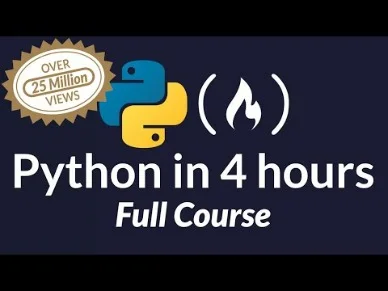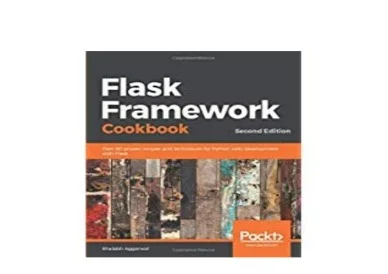How To Make A Web Application Using Flask In Python 3
Content
- Flask Isn’t Suitable For Complex Systems
- Frontend Development Vs Backend Development
- People Who Viewed This Also Viewed These
- Alright, So what Is Flask?
It is preferred by many Data Scientists as it is quick to implement and easy to show a demo of their models. As Flask is written in Python, Developers who are familiar with Python find it no difficult to learn Flask. Though Flask has no additional tools or libraries that a normal framework would have, it makes it easy to implement other services like databases. Web Development has become quite the way for Data Scientist or any AI enthusiast to show his algorithm, project that he has worked on. This is why most machine learning and deep learning engineers use some web development to deploy their models.
This is similar to a Django model in that it manages communication with a database. It’s up to the app developer to design a model to work with Flask’s other components. Remember how Django uses templates to create standard-looking pages that can be populated with custom text? Well, jinja2 is a Django-inspired template engine that helps you do the same thing in Flask. Werkzeug is a Web Server Gateway Interface utility library in Python. When you create a web application, you’re focusing on using HTTP requests to create, query, and manage how content is put together. As a full-stack Python framework, Django includes plenty of features that you might need in your web app, from user authentication to RSS feeds.
The project became a quick success, and the Pocoo team managed the development of Flask until 2016. After the team disbanded, the management of Flask was transferred to the Pallets Projects group. While Django comes as a full package, there’s no way to separate anything out of that package if you just need a few features. So, Django can feel like overkill for small projects that have no plans to scale up.
Flask Isn’t Suitable For Complex Systems
Template inheritance also gives you the ability to reuse the HTML code you have in other templates (base.html in this case) without having to repeat it each time it is needed. In this new version of the index.html template, you use the tag to inherit from the base.html template. You then extend it via replacing the content block in the base template with what is inside the content block in the preceding code block. Now use Flask to create an endpoint and render a template there. Before implementing Flask, we will just take a look at our project structure. Go ahead and create your virtual environment using the following.
Pyramid’s bootstrapping tool is called pcreate which is part of Pyramid. Previously the Paste suite of tools provided bootstrapping for but has since been replaced with a Pyramid-specific toolchain. You use the confirm() method to display a confirmation message before submitting the request. Edit the post and submit the form, then make sure the post was updated. The navigation bar will now have a New Post item that links to the /create route.

The methods keyword argument will take a list of strings as a value, with each string a type of possible HTTP method. In practice, you can use app.route to restrict to one or more types of HTTP request or accept any by leaving the methods keyword argument alone. The flask-sqlalchemy package leverages SQLAlchemy to set up and inform the database structure.
Frontend Development Vs Backend Development
Currently your application only displays a simple message without any HTML. Web applications mainly use HTML to display information for the visitor, so you’ll now work on incorporating HTML files in your app, which can be displayed on the web browser.

Next you import the flask package with import flask; then print the Flask version, which is provided via the flask.__version__ variable. In this article, we have seen Flask and its importance in today’s world. A simple implementation on how to install Flask and use it is demonstrated.
People Who Viewed This Also Viewed These
It shows how to deploy it to an Amazon EC2 instance then scale the services on Amazon EC2 Container Service . Microservices with Docker, Flask, and Reactis an awesome course for beyond-the-basics work with Flask.
- The choice to use Falcon/Flask for Coras was made three years ago, and we haven’t looked back since.
- EducationDjango is more strenuous to learn but has many online materials and resources.
- Django is a free and open-source Python web development framework used in building websites.
- This tutorial introduced essential concepts of the Flask Python framework.
- The goal for this view is to alert the user they created something new.
- Separate ‘.py.’ Files as the project scale to ensure they are accessible to URLs.
WSGI is the specification of a common interface between web servers and web applications. One can also test the live API of the application, and if successfully deployed, it will return a 201 status code. We can also test each part of a flask application individually. Flask has no restrictions for the use of databases; there’s no native support for databases. However, they can be broadly divided into two categories.That following relational model for, e.g., SQL, sqlite3 mainly for structured data. Start with a view that handles onlyGET requests, and respond with the JSON representing all the routes that will be accessible and the methods that can be used to access them. In Flask, a many-to-one relationship can be specified using the db.relationship function.
On the other hand, the Pytest-Flask extension adds Pytest support to Flask. Django comes with a handy management command for collecting all static files and placing them in a central location for production deployments. Flask doesn’t support forms by default, but the powerful Flask-WTF extension integrates Flask with WTForms. WTForms-Alchemy can be used to automatically create forms based on SQLAlchemy models, bridging the gap between forms and the ORM much like Django’s ModelForm.
Regardless of which Python framework you prefer, what’s important is that you start expanding your knowledge of web development by building a Python app with Flask or Django. Just remember that you should understand the basics of Python before creating your first app.
If yes, and I’m sure we don’t want to migrate the databases to some custom Big Data engine in the future, then Django helps us a lot. In theory, you don’t have to use the Django ORM, but a lot of the built-in functionality is based on it in practice. Think of Flask like a Lego set, you plug in the pieces to build your application. It’s unopinionated and leaves it up to you to decide how you want to implement things in your projects.

The blog post series “Things which aren’t magic” covers how Flask’s ubiquitous @app.route decorator works under the covers. The “Hello, World!” code for Flask is just seven lines of code but learning how to build full-featured web applications with any framework takes a lot of work.
Alright, So what Is Flask?
It looks very similar to the Task object; you’ll find that most objects have the same basic format of class attributes as table columns. Every once in a while, you’ll run into something a little different, including some multiple-inheritance magic, but this is the norm. Flask needs the database URL to be part of its central configuration through the SQLALCHEMY_DATABASE_URI attribute.